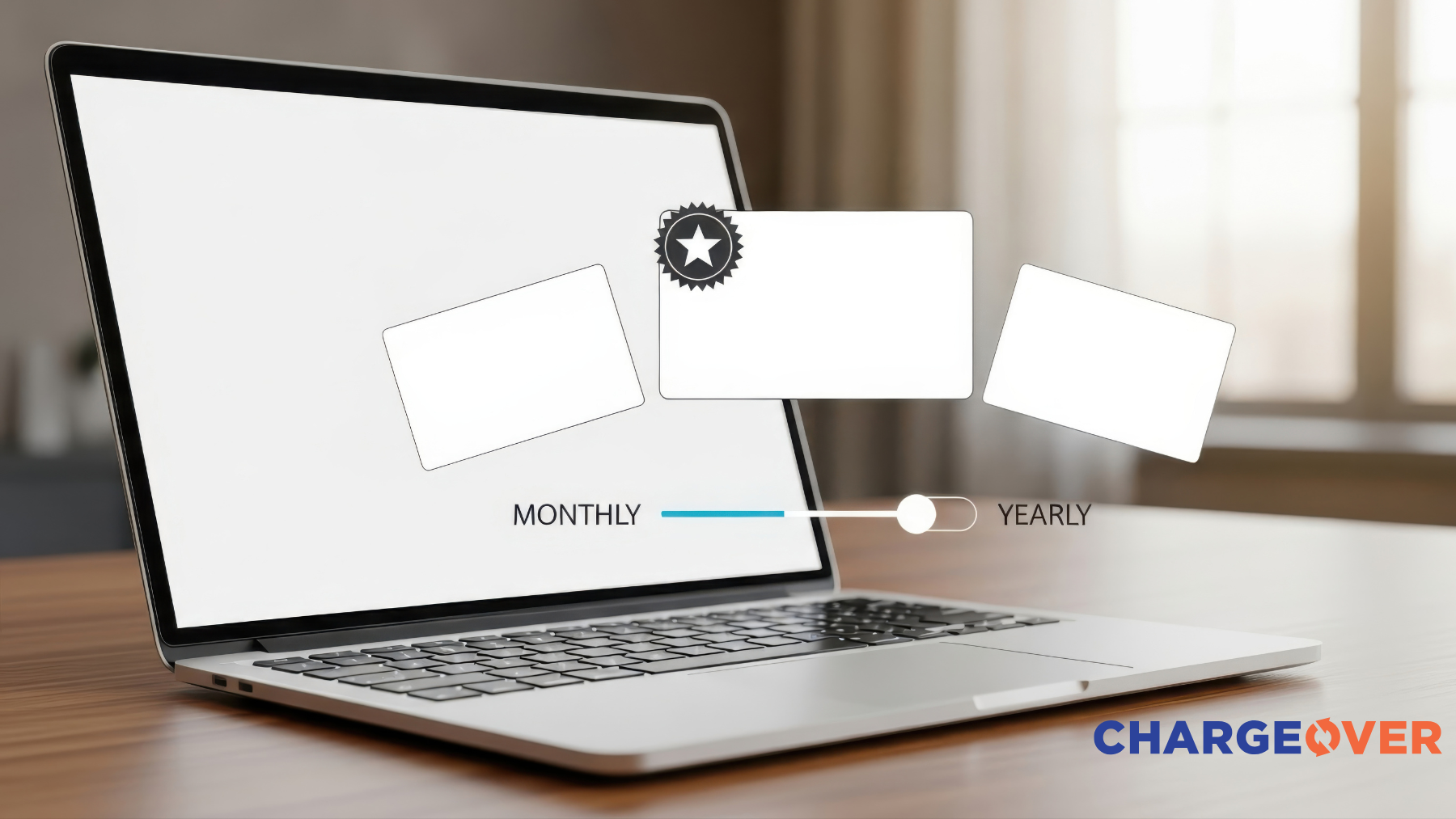The price tag is often the deciding factor for consumers, even more so in a world where choices abound. Because of this, SaaS businesses must master the powerful strategy of competitive pricing to win over customers.
By understanding the nuances of market dynamics and strategically aligning your pricing with competitors, you can gain a competitive edge and drive sustainable growth.
This blog post will serve as a short but insightful guide to competitive pricing, equipping you with the necessary knowledge to effectively analyze your competitors, understand market dynamics, and set prices that help you attract more customers and outperform your rivals.
Main takeaways from this article:
- Competitive pricing involves setting business prices based on competitors' offerings to stay relevant and appeal to price-sensitive customers.
- This strategy supports businesses in enhancing market intelligence, driving sales volume, and maintaining a competitive edge without sacrificing profit margins.
- Competitive pricing strategies include penetration pricing, price skimming, economy pricing, price matching, and loss leader pricing, each suited to different market conditions.
- ChargeOver provides flexible pricing and invoicing options, allowing businesses to adapt their pricing models dynamically to remain competitive in real-time.
What is competitive pricing?
Competitive pricing is a strategic approach to setting prices for products or services by considering the prices offered by direct and indirect competitors. This strategy goes beyond simply calculating your production costs and adding a markup. Instead, it's about analyzing what competitors charge for their offerings, understanding customer perceptions of your products and services, and using this knowledge as a benchmark for setting your prices to gain a competitive advantage.
Benefits of a competitive pricing strategy

Here's what you can do by implementing a competitive pricing strategy:
Attract price-sensitive customers
Price is a key decision-making factor for many consumers. By offering competitive prices, you can attract price-conscious customers who prioritize affordability without compromising on quality. This expands your customer base and drives sales volume.
Maintain market relevance
You must ensure your pricing aligns with industry standards. Keeping your pricing in line with the market ensures you stay in the game and avoid being perceived as overly expensive. This helps maintain your brand's relevance and competitiveness within your industry.
Drive sales volume
Competitive pricing is a powerful tool for boosting sales. When customers are in the process of deciding which product or service to buy, they often compare prices. If they perceive that your products and services are competitively priced, they are more likely to choose you over the competition.
Enhance market intelligence
The process of monitoring competitor pricing provides valuable insights into market trends and customer behavior. This market intelligence allows you to refine your pricing strategy and continuously optimize it for success.
Support pricing flexibility
Competitive pricing doesn't mean blindly following competitor prices. It means engaging in competitive price analysis intelligently to adjust your prices based on a variety of factors, including product tiers, market segments, and ongoing promotions. This flexibility allows you to respond quickly to changes in the market and stay ahead of others.
Types of competitive pricing strategies

There are several competitive pricing strategies to leverage depending on your product, target market, and overall business goals. Here are some of the most common approaches:
Penetration pricing
The penetration pricing strategy involves businesses setting a low initial price for a product or service to increase market share. This strategy is often used by new players or when a company wants to introduce a new product.
By setting a low price, businesses can attract price-sensitive customers who may not have considered the product or service before. This can lead to increased sales volume and brand awareness. Once the product or service has gained market share, the company may gradually increase the price.
When to use penetration pricing
Penetration pricing is best suited for products or services that:
- Have a high price elasticity of demand (meaning that small changes in price lead to large changes in demand)
- Have a large potential market
- Can benefit from economies of scale
- Have a low threat of new entrants
Examples of penetration pricing:
- Airline industry: Airlines often offer low introductory fares to attract new customers and build market share.
- Consumer electronics: Companies may offer low prices for new smartphones or tablets to encourage early adoption.
Price skimming
Price skimming is a pricing strategy in which businesses set a high initial price for a new product or service and gradually lower the price. This strategy is often used for innovative products or services with a high perceived value and limited competition.
By setting a high initial price, businesses can maximize profits from early adopters who are not discouraged by premium pricing and are more than willing to pay a high price for the latest product or service. As demand from these early adopters decreases, the price is gradually lowered to attract more price-sensitive customers.
When to use price skimming
Price skimming is best suited for products or services that:
- Have a limited number of early adopters willing to pay a premium
- Have high production costs that can be recovered quickly
- Face little or no competition in the short term
Examples of price skimming:
- Technology products: New smartphones or gaming consoles are often launched at high prices and then gradually reduced over time.
- Fashion: High-end fashion brands may introduce new collections at high prices and then offer discounts or clearance sales later.
Economy pricing
Economy pricing is a strategic approach where businesses establish a low price point for their products or services to appeal to budget-conscious consumers. This strategy is often used for commodity products or services with low production costs and high demand.
By setting a low price, businesses can capture a large market share of price-sensitive customers. This strategy often relies on high sales volume to generate profits.
When to use economy pricing
Economy pricing is best suited for products or services that:
- Have low production costs
- Have high demand
- Are commodity products with little differentiation
- Are sold in large volumes
Examples of economy pricing:
- Grocery stores: Generic brands of food and household products are often priced lower than brand-name products.
- Retail: Discount stores and dollar stores offer a wide range of products at low prices.
Price matching
In this competitive pricing strategy, retailers promise to match or beat the price of an identical product offered by a competitor. If a customer finds a lower price for the same product at another store, they can present proof of the lower price to the retailer, and the retailer will adjust their price to match it.
When to use price matching
Price matching is often used by retailers who:
- Sell products with high-price competition
- Want to attract price-sensitive customers
- Have a strong supply chain and can quickly adjust prices
Examples of price matching:
- E-commerce retailers: Many online retailers offer price-matching guarantees to compete with other online stores.
- Home improvement: Stores like Home Depot and Lowe's may have price-matching policies for tools, appliances, and building materials.
Loss leader pricing
This strategy involves offering a product at a drastically lower price to attract customers who may not have otherwise shopped at the store. It increases foot traffic, and once customers are inside, businesses can employ upselling and cross-selling techniques to promote higher-margin products.
When to use loss leader pricing
Loss leader pricing is best suited for businesses that:
- Have a wide range of products or services
- Have a strong supply chain and can afford to sell products at a loss
- Want to attract new customers
- Want to increase sales of complementary products
Examples of loss leader pricing:
- Supermarkets: Supermarkets often use loss leader pricing on popular items like milk, eggs, and bread to attract customers.
- Electronics retailers: Retailers may offer deeply discounted electronics to attract customers, hoping they will also purchase accessories or other products.
Key tips for launching a successful competitive pricing strategy

Here are some key tips to launch a successful competitive pricing strategy:
Offer competitive prices
To remain competitive in the market, it's crucial to offer attractive prices to customers without compromising your profit margins.
Do thorough market research to examine your competitors' pricing strategies and customer preferences. Consider using pricing analysis tools to identify optimal price points and adjust your pricing strategy accordingly.
Understand your cost structure
A deep understanding of your cost structure is essential for setting competitive prices. Identify your variable and fixed costs to accurately calculate your break-even point. Consider using cost accounting techniques to analyze your cost behavior and identify areas for cost reduction.
By understanding your cost structure, you can set prices that cover your costs and generate a reasonable profit margin.
Monitor competitor prices regularly

To maintain a competitive edge, monitor your competitor's prices regularly. Utilize pricing tracking tools or manually track prices to stay informed about market trends and pricing changes.
By monitoring competitor prices, you can identify opportunities to adjust your pricing strategy to remain competitive.
Focus on value-added services to attract customers
While price is an important factor, it's not the only one. Offering a value proposition not yet matched by other players in the market can put you ahead of the game.
To differentiate your offerings and attract customers, focus on providing value-added services. Identify unique features, benefits, or services that can set your products or services apart from the competition. By focusing on value-added services, you can justify higher prices and build customer loyalty or even sell your services at the same price as others.
Avoid a race to the bottom
Engaging in price wars can erode profit margins and harm your business. Instead of focusing solely on price, differentiate your offerings through higher-value services, superior quality, or exceptional customer service.
By using value-based pricing, you can maintain healthy profit margins and build a sustainable business.
Adapt pricing dynamically
A rigid pricing strategy may not be effective in a dynamic market. Having a dynamic pricing strategy allows you to adjust your prices based on market conditions, demand, and other factors.
Consider implementing dynamic pricing strategies to adjust prices based on factors like consumer demand, time of year, or inventory levels. You can also offer tiered pricing plans to cater to different customer segments and maximize revenue.
Manage competitive pricing strategies effectively with ChargeOver
Developing a successful competitive pricing strategy requires constant monitoring, flexibility, and agility. ChargeOver's robust suite of subscription management features empowers you to do just that, allowing you to easily adjust pricing models in real-time and stay ahead of the curve.
Here's how our platform supports a competitive pricing strategy:
- Seamless price adjustments: ChargeOver enables you to create and manage various pricing plans with different tiers, features, and billing cycles. Simply adjust prices within the platform, and the changes will automatically be reflected in your customers' invoices and subscriptions.
- Automated invoicing: It automatically generates invoices based on your chosen pricing structure, ensuring your customers receive accurate and timely bills. This frees up your team to focus on more strategic tasks. Accept various payment methods, including credit cards, ACH, and PayPal, for a smooth customer experience.
- Dynamic pricing for market demand: Match or beat the prevailing market price. ChargeOver offers various pricing models, helping you offer billing solutions based on customer usage. This allows you to maximize revenue during peak periods while remaining competitive during slower months.
- Data-driven insights: Our comprehensive reporting and analytics tools provide valuable information on customer behavior and pricing effectiveness. Analyze key metrics such as customer acquisition cost (CAC), average revenue per user (ARPU), and churn rate to identify areas for improvement and optimize your pricing strategy.
Ready to unlock new levels of subscription management efficiency?
Schedule a 20-minute demo and learn how ChargeOver can simplify your competitive pricing model!
Transform Your Billing Experience
Your results are just the beginning. Learn how to optimize your billing and scale your success.


